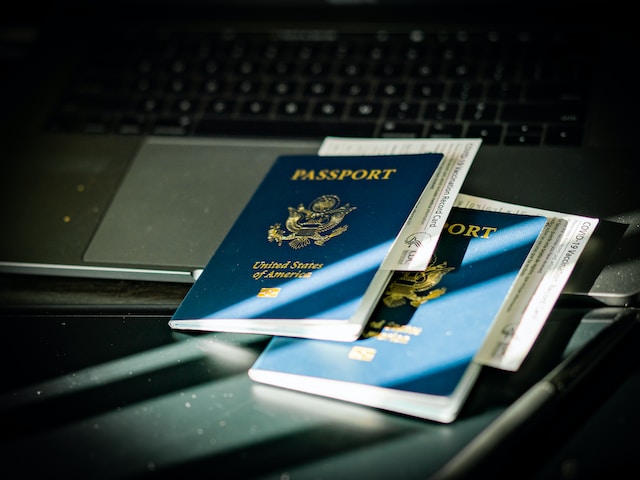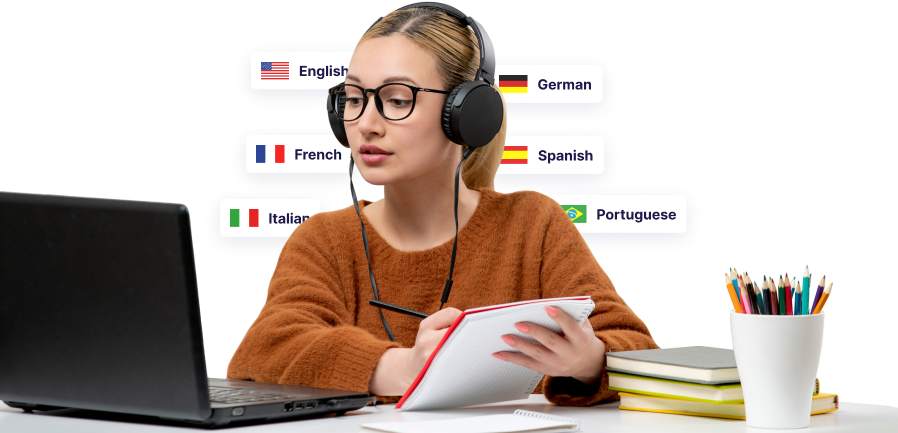Rapid Translate Team
Anyone in need of translation services has two major options. It’s a struggle to choose between machine translation vs human translation without understanding how they work. Most often, assumptions lead people to make wrong choices.
Hence, there are several questions about machine vs human translation. People want to know which is efficient, faster, and affordable. But while using certain factors to decide, you might exempt equally important ones.
This post highlights all factors and compares both options!
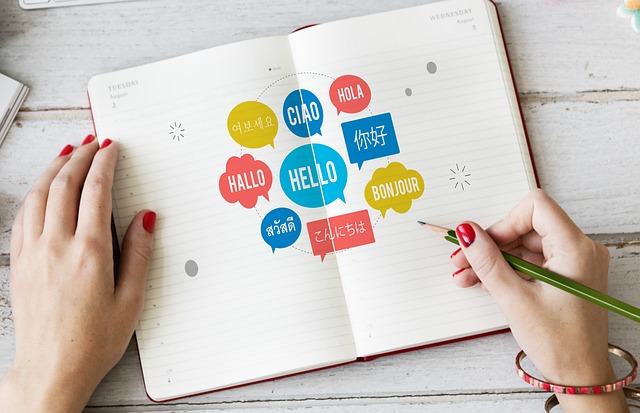
Table of Contents
Machine Translation vs Human Translation for Foreign Documents
When translating documents, you can choose between machine or human translation. However, there are many language laws to follow. Moreover, different grades of translation can influence your choice. Anyone who needs a standard rendition requires a basic-level conversion of foreign documents.
However, more advanced translations have a limited option. Machine translation cannot certify documents or perform localization or notarization tasks. In such instances, machine tools serve as CAT tools (computer-assisted tools) to a professional.
Thus, when you need a basic translation that doesn’t require extra skill, which do you choose? It depends on your preferences, but you must first examine both options. That’s why the next section addresses the determinants.
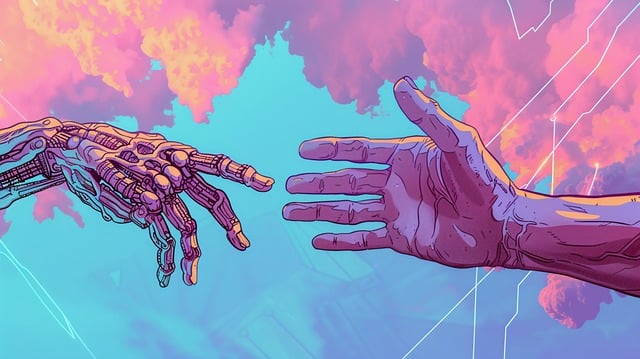
A Comparison of Machine vs Human Translation
It’s important to compare machine vs human translation critically to gain insights for making an informed decision.
Here are six factors to consider before choosing a machine or human translation of birth certificates or other important documents.
1. Speed
People often fail to translate their documents beforehand as it’s difficult to predict which they’ll need. Therefore, sometimes, people require rush translation services. Patronizing human translation services takes a few hours or almost a day.
However, their turnaround time is normally two to three working days. But, the timing can change, as factors like the volume of documents can affect it. Therefore, request a quote to confirm.
Machine translation tools take less time, as their services are instant. Once you input information, a machine translator delivers output in real time. Hence, it’s much faster than human translation.
2. Accuracy
Accuracy deals with the correctness of terms in both languages. It’s sometimes difficult to replicate words in another language. Also, a translator’s word choice can affect sentence structure and alter text meanings.
Hence, it’s important to consider the level of correctness and grammatical precision each tool provides. Machine tools use translation memory systems and a database that stores word variations in languages. However, language evolves rapidly.
Therefore, you may not always get the most accurate translation. On the other hand, human translators take continuous education classes to learn new developments in their niche.
Moreover, when translating, there are idioms, colloquial expressions, cultural sensitivity, and nuances that artificial intelligence (AI) cannot comprehend. For example, directly translating a remark in a source language can appear offensive in the target language.
Therefore, humans are better at working tactically, observing cultural nuances, and generating continually accurate translations.

3. Cost
On the one hand, you can get machine translations for free. You only need data to connect to your device’s store, download the app, or use the web version. But after that, you won’t pay additional fees for instant translations. However, some tools with advanced functions require payment.
On the other hand, it’s impossible to get a free human translation. The only exception is if you know someone who does it as a favor. Otherwise, you will have to pay for the services, and the rates will be more expensive. You can pay between $25 to $30 per page.
4. Language and Specialization
You must choose a medium that excels in the necessary language pair when getting a translation. While a single translator cannot specialize in more than ten languages, a machine tool can cover up to a hundred.
However, performance varies. Because humans specialize in fewer language pairs, they attain near-native proficiency. Moreover, you can always find a translator for the language pair you need. But if you want multiple language translations from one source, choose machine translation systems.
However, note that most machine tools produce better results for languages with large online resources. Hence, they’re good for repetitive translation tasks. Contrarily, machine tools’ vocabulary is non-extensive for languages with few databases and references online.
5. Post Editing
Machine translation lacks post-editing ability. It only replaces words with their best alternative in a foreign language and ensures correct tenses. That’s why machine translations are highly susceptible to errors, as there is no once-over.
However, a human translator writes and edits simultaneously and then revisits the translation to re-edit. These multiple checks ensure accuracy. As such, even when people use machine tools for high-quality translations, they still pay for a professional translator. The translator then reviews the translation and checks for errors.
6. Adherence to Style Guides
Humans are more adherent to style guides than machines. These programmed tools can’t format documents. Hence, they translate in the preprogrammed font size and style, which may not suit your needs.
Sometimes, when translating documents for submission to international agencies, there are certain formats you must follow. Even the tone of writing matters. Official documents are formal, while correspondence with familiar people may be less formal.
Sadly, machine translation is incapable of adjusting tone. Due to this, machine translations always sound strict and somewhat robotic. However, adopting natural language processing systems humanizes AI content, making it sound more natural. But this is still a work in progress.
On the other hand, humans provide flexible translations. They can adapt the tone, formatting, and other translation specifics to fit the target audience or recipient. Hence, they create better translations that meet high standards.
For example, translations for the United States Citizenship and Immigration Services (USCIS) and other immigration-related projects. Also, most machine tools cannot automatically convert file formats.
You may have to copy and paste your content before and after translation and then edit it. However, an experienced human translator knows how to convert files for efficient Word document translation.

Ideal Uses of Human vs Machine Translation
The previous sections compare the advantages and disadvantages of human vs machine translation. It’s obvious that human translation scores more points than machine translation, but this doesn’t mean machine translation is useless.
It exists for a reason and is important as it serves specific purposes. Despite their shortcomings, machine tools are great for providing instant translations. Assuming you’re talking with a friend and they throw in foreign slang, you won’t always know what they mean. You can quickly use a translation website or app to confirm the meaning in your spoken language.
Neural machine translation facilitates real-time conversations and makes communication easier. Even if you travel to a foreign country, it’s ideal to download a translation app. It’ll be useful as hiring an interpreter throughout your stay is impractical.
But with a machine translation service, you can easily access advanced AI translation. Interestingly, these apps don’t only work with text input but can also detect voices. Thus, you can record as someone speaks and get instant interpretation.
A machine translation tool is just like a guide. You can also use it to scan menus, signposts, ads, and visual content. Hence, machine translation is appropriate for informal real-time language conversion.
But you’d be better off with a human professional for everything else. Since machine translations are fast, you can use them for bulk translations. But don’t try it with important documents. Instead, hire a translation company because they work with multiple staff.
Human translators are perfect for translating academic documents. They handle all sorts of paperwork for all purposes, languages, and niches. Humans think outside the box and provide innovative solutions to language problems. Hence, the abilities of human translators to be vast and versatile makes them a preferable choice.
FAQ
What is the difference between human translation and machine translation?
A professional conducts human translations, while AI technology is responsible for machine translations. Hence, the former is more accurate and innovative, leading to a higher quality, while the latter is prone to errors. But you can use either of them depending on the nature of the translation.
Why is a human translation better?
A human translation is better for several reasons, including the fact that it allows the mastery of niches and languages. Hence, translations are more precise, especially as humans better understand expressions of cultural nuances.
What are the advantages of machine translation?
Machine translations provide instant results; hence, one doesn’t have to wait hours or days. The apps are free, and you can access them at any time. There’s also an offline translation feature, which enables those in remote locations to access translation services.
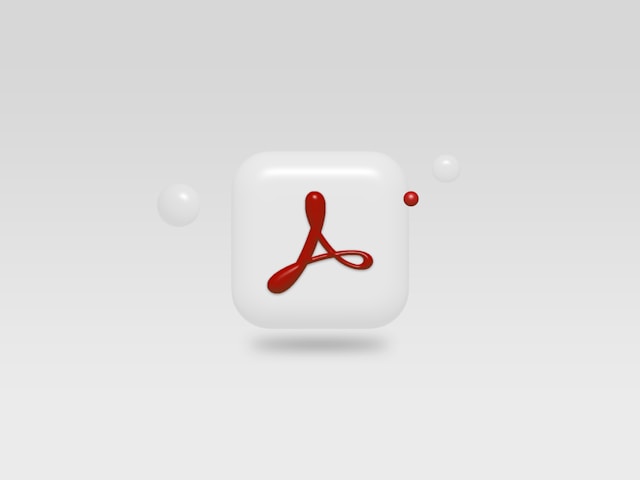
Human Translation vs Machine Translation PDF
Several people have digital copies of their files in portable document format (PDF). This storage format is exceptional as it maintains the original formatting of a document and is easy to share.
However, it’s also very difficult to edit. Hence, people ask, “Which is better, human translation vs machine translation PDF?”
In a previous section, we discussed the abilities of human and machine translators. One prominent factor is that machine translations cannot format documents. But if you dig deeper, you’ll discover that each machine tool is compatible with specific file formats.
Sadly, this mostly excludes PDFs. The few tools that can translate PDF materials while maintaining the original meaning struggle to attain perfection in formatting. If you want to translate a PDF file digitally, using an online human translator is best.
The process is easy since several human translators offer their services over the Internet. Start by choosing a translation service. The major options are freelancers and translation companies. While freelancers are good, it’s a one-person service. Therefore, finding an expert in the necessary niche and language pair is more difficult.
Due to this, it’s faster and more convenient to hire a translation agency like Rapid Translate. Thus, you now know the better choice when comparing machine translation vs human translation for PDFs.
At Rapid Translate, we thoroughly vet our human translators and the documents they produce. We are a legit translation service with qualified experts in all niches and over sixty language pairs.
Visit our website and contact our customer service agents, who will guide you. You can state your requirements and request a quote. Our services are exquisite and affordable, so you’ll enjoy transacting with us.
Place your order for the best human translation available internationally!




